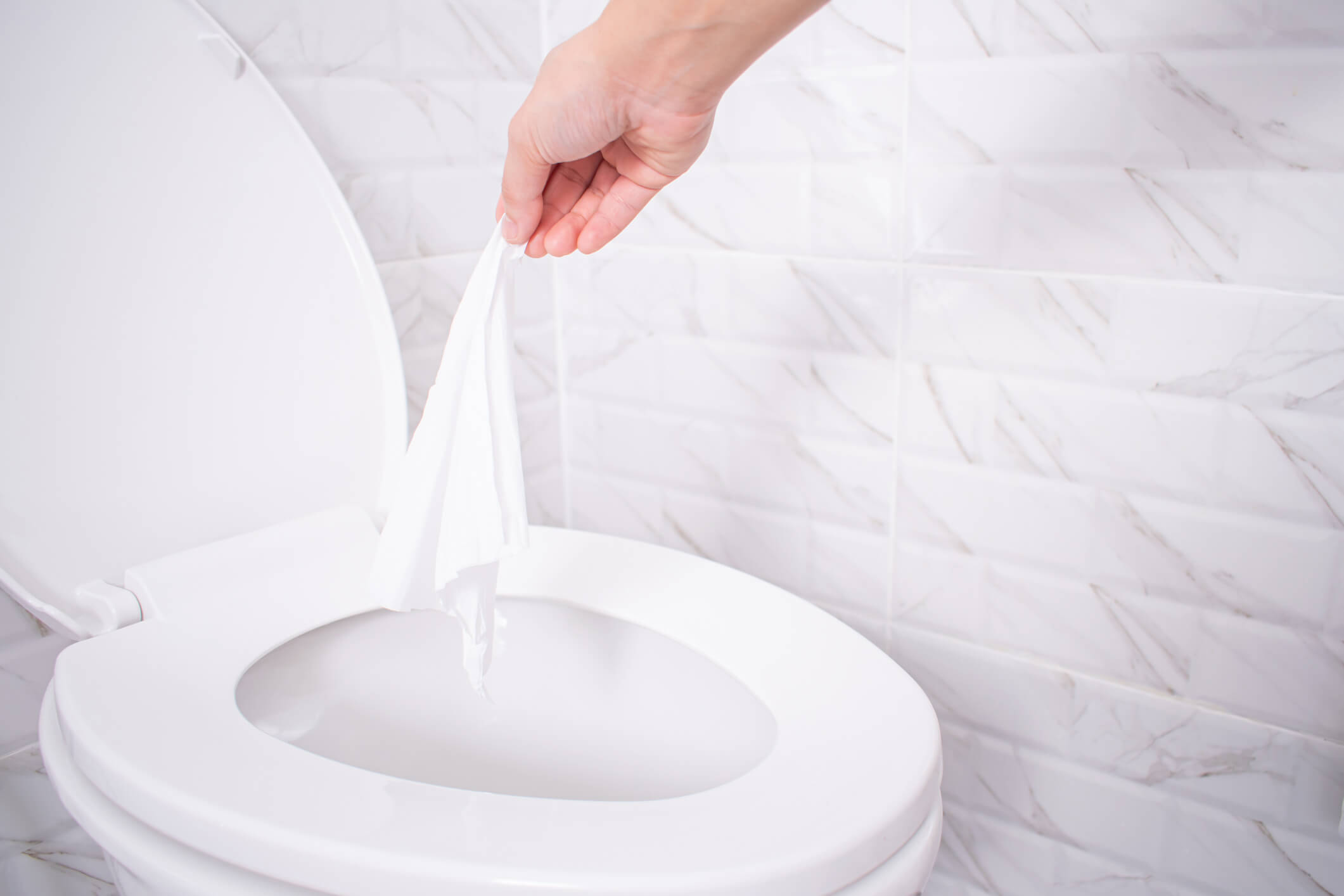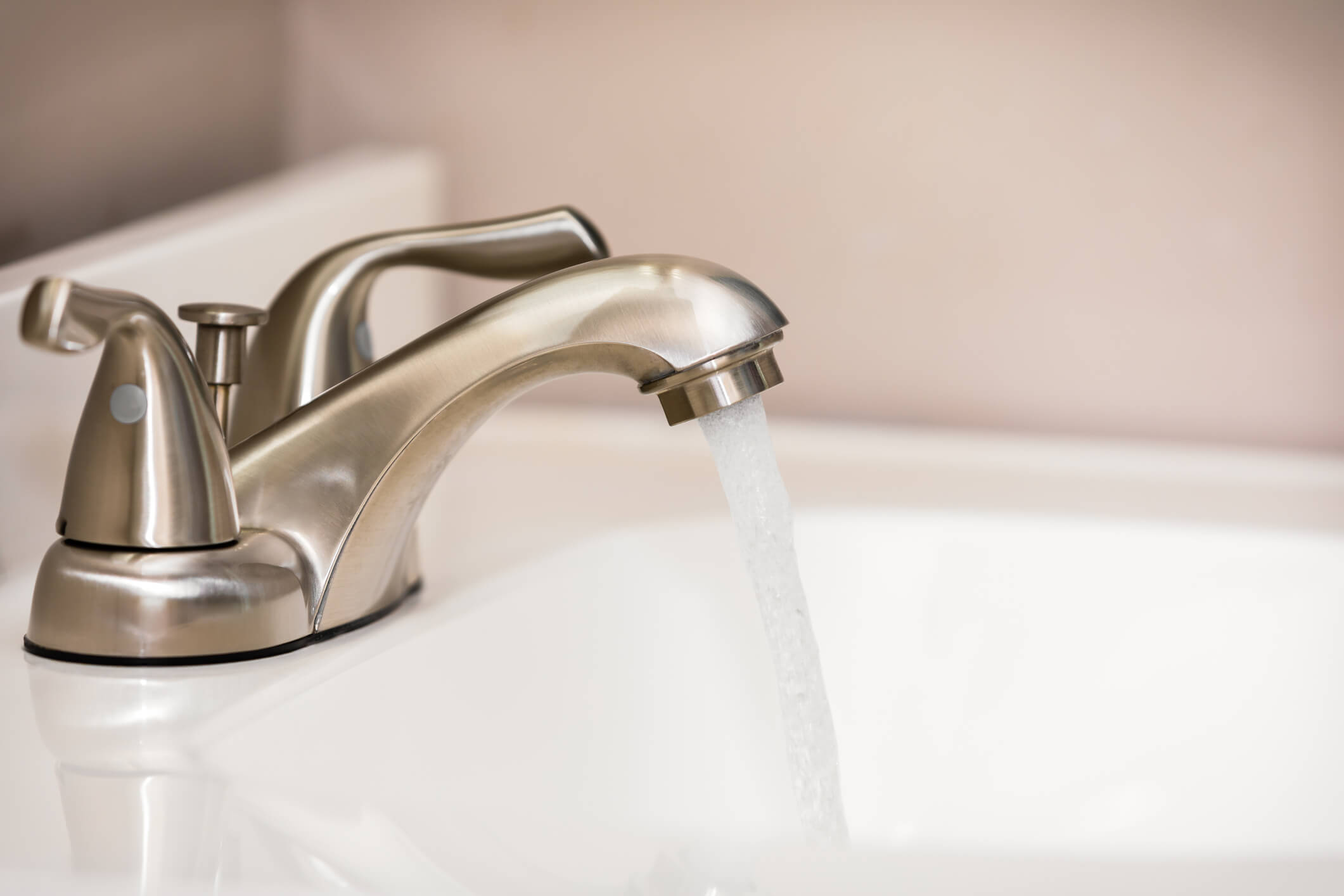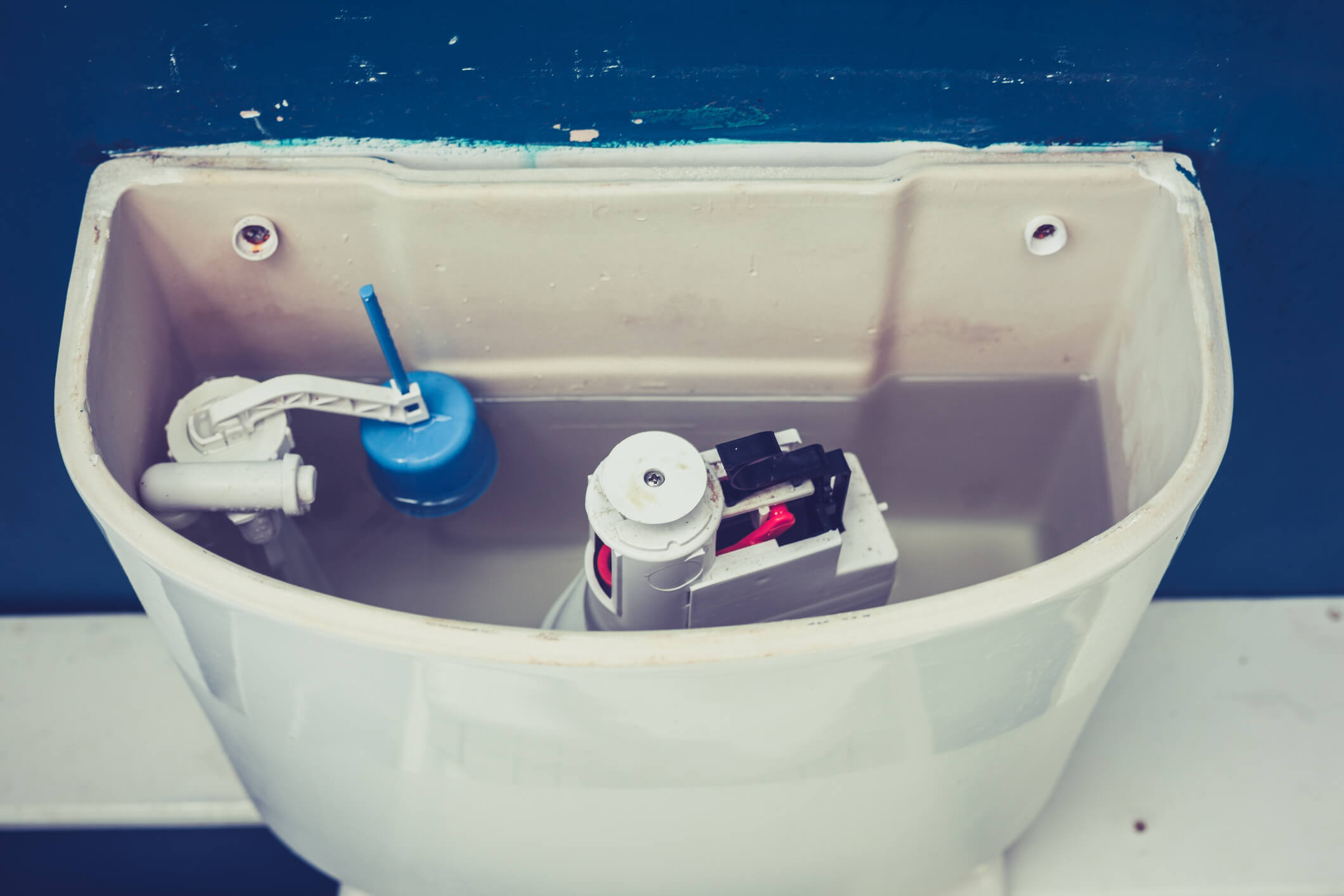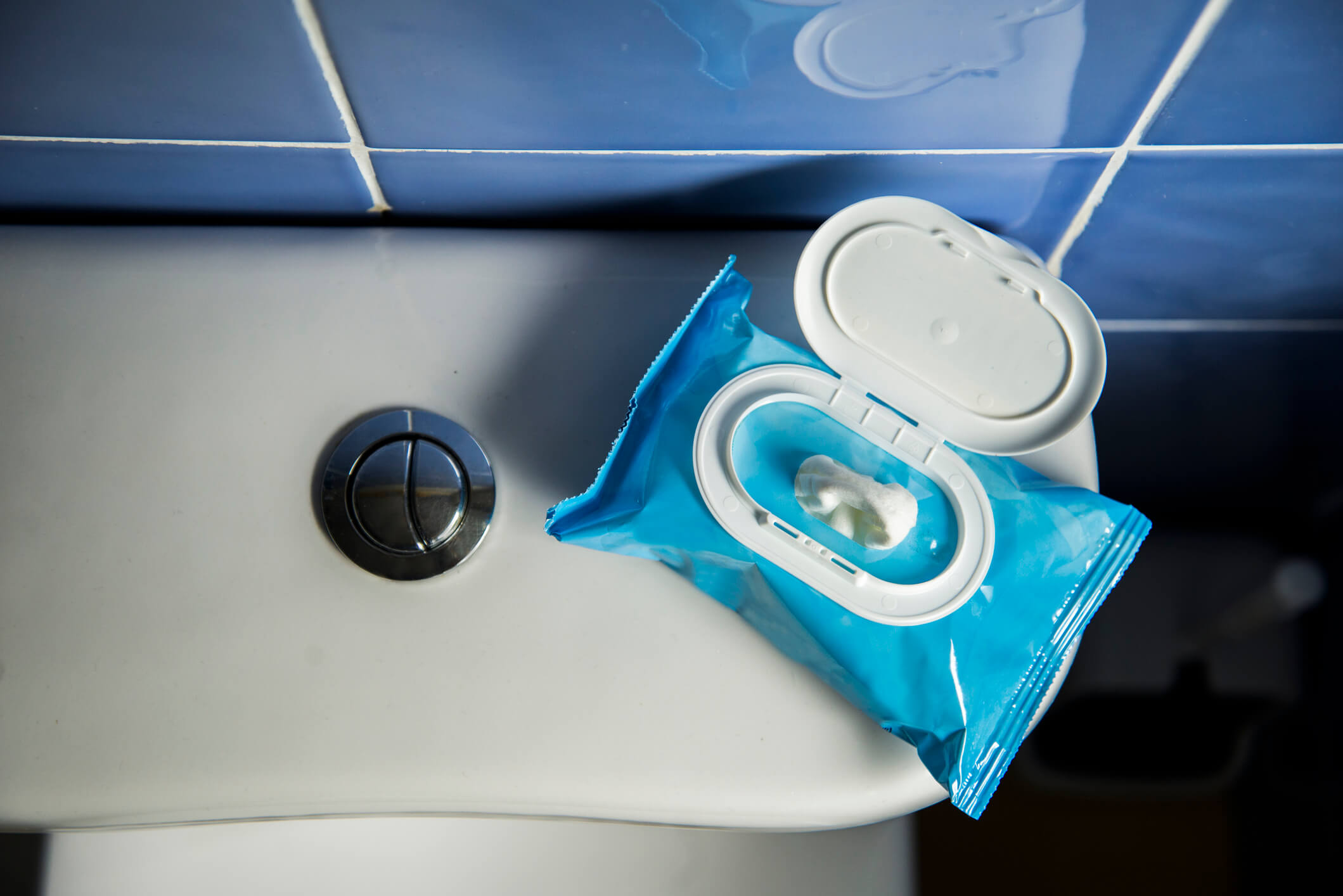A lot of products and materials seem to be “flushable.” Some will even appear to go down your toilet just fine, with no negative repercussions. What you might not realize is that something that isn’t clogging your toilet now may be causing a problem deeper down in your home’s plumbing—or even in your town’s sewer system and waste treatment plants.
Below are some of the most common items people flush down the toilet that can cause major plumbing and sewer issues.
1. “Flushable” Wipes
Can you flush them? Yes. So why should you not? Despite what manufacturers claim, flushable wipes take a long time to break down in water, while toilet paper breaks down almost immediately. If toilet paper did not dissolve into tiny bits and shreds in just minutes, everyone in the U.S. would have significant plumbing and sewer clogs.
Consider this: flushable wipes need to hold their shape in water because they must remain wet in the packaging without breaking down. To get an idea of how long it takes for flushable wipes to break down the way toilet paper does, check out this video from The Fit RV, where multiple flushable wipe brands are tested alongside toilet paper.
2. Dental Floss
“But it’s so small!” As harmless as dental floss may seem, this material has some serious clog-causing abilities. Just like hair—perhaps the most infamous clog-causer—floss can stick to dirty pipe walls and become tangled up with other material down in your drains. This can result in a blockage that forms over time.
Bottom line: don’t give up flossing, but just be sure to toss used floss into your bathroom wastebasket—not your toilet.
3. “Flushable” Kitty Litter
We hate to break it to you, cat moms and dads: this stuff is terrible for your plumbing system. Any kind of sandy or clay kitty litter needs to have clumping properties so that you can scoop it up. Anything that clumps can coat your pipe walls and cause a clog.
If you need a fast, easy way to take care of your cat’s litter, we recommend the Litter Genie, which allows you to take the litter out to the garbage about once a week. If you bought flushable kitty litter to avoid plastic waste from traditional kitty litter bags, these plant-based, USA-made bags are a fantastic option.
4. Napkins, Paper Towels, and Facial Tissues
Paper is paper, right? Not exactly. Even though these products appear to be very similar to toilet paper, they are not toilet paper substitutes.
Like wet wipes, napkins, paper towels, and facial tissues have to hold up against moisture. This means that while they’re traveling through your home’s drain and waste pipes, they aren’t going to break down into pieces as quickly as toilet paper would. Consequently, these materials are more likely to wad up and get caught in the areas where your pipes are already dirty or where they change direction.
In short: dispose of any non-toilet-paper paper products in trash cans, not toilets.
5. Cotton Products (Makeup Pads, Cotton Balls, Q-Tips, etc.)
Now if paper towels won’t break down fast enough in water, you know that anything made of cotton won’t. Cotton products like makeup pads and cotton balls are made to suck up moisture and hold their shape. Even though they are small enough for you to flush them initially, they can get stuck in your home’s pipes farther down the line.
To quote Yoda, “Size matters not.” Cotton is not a product you want entering your plumbing system, no matter how much of it there is.
Is water draining slowly or backing up in your home? At Pioneer Plumbing and Septic, our Houston plumbers specialize in professional drain cleaning services with 100% customer satisfaction guaranteed: (281) 815-2772.




